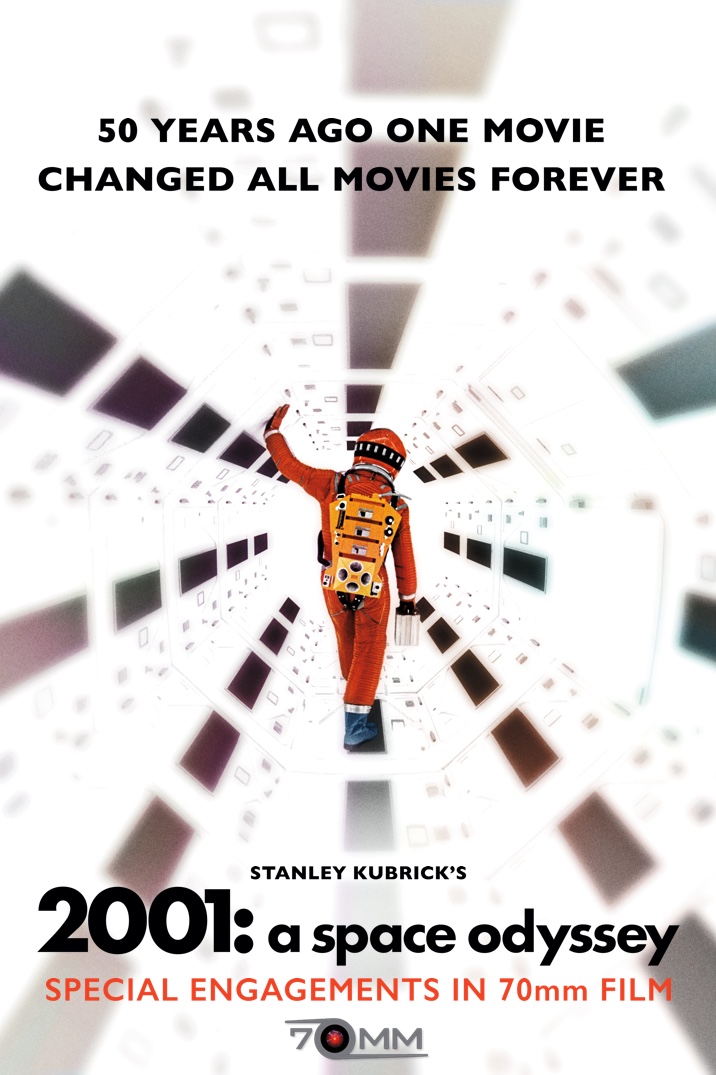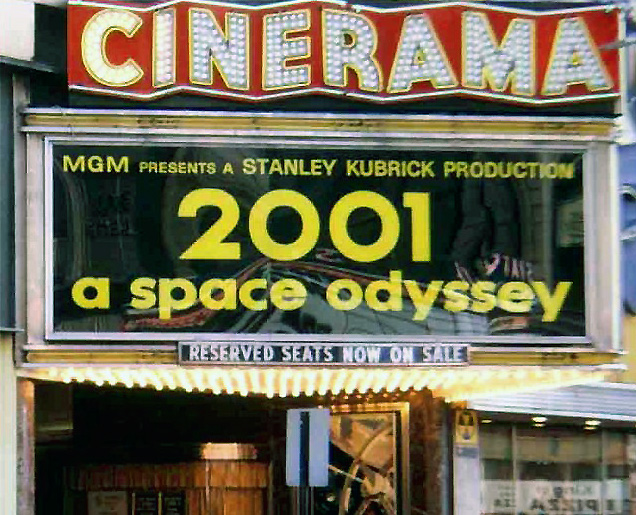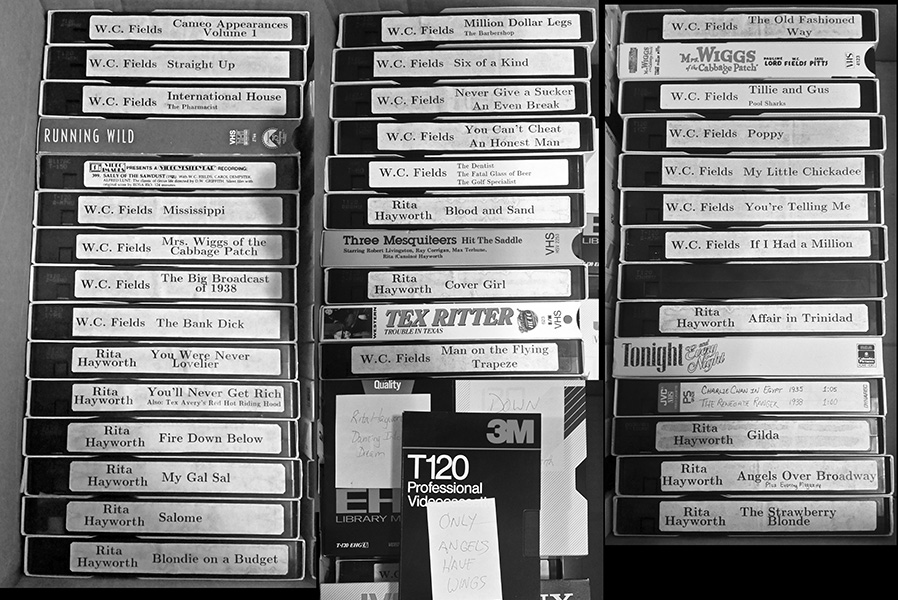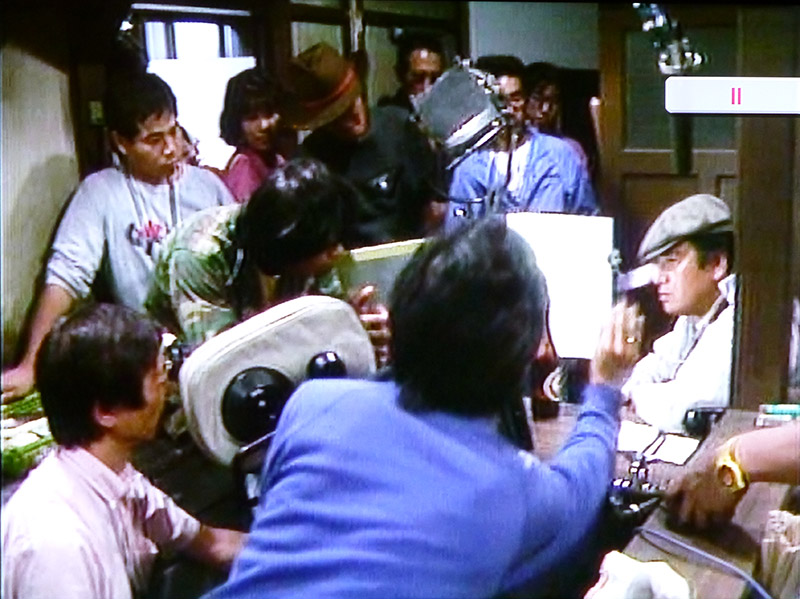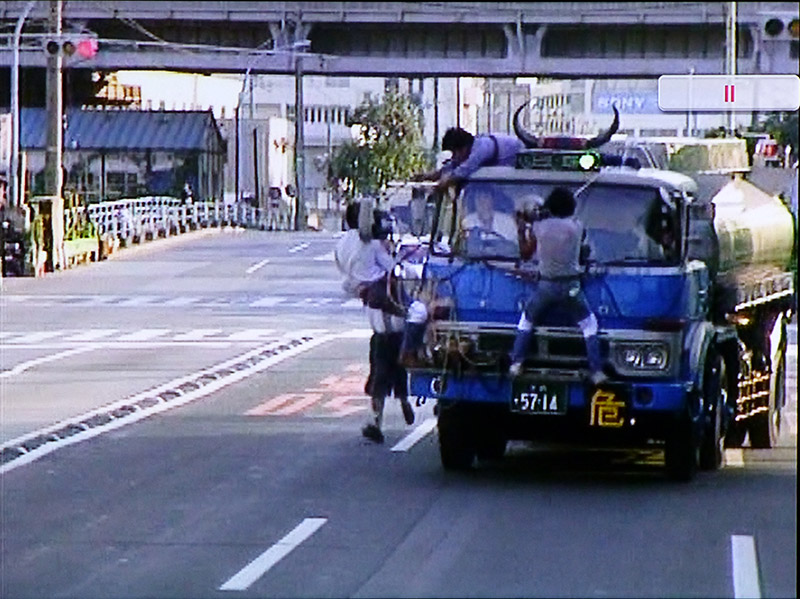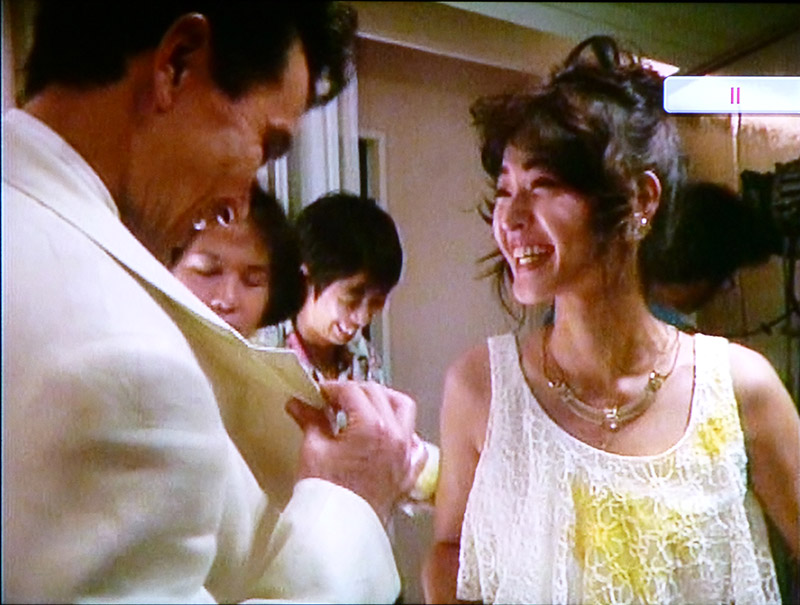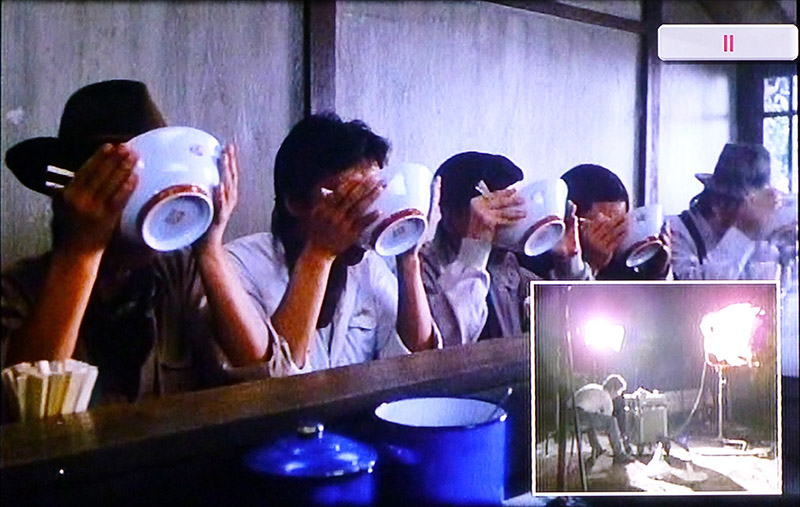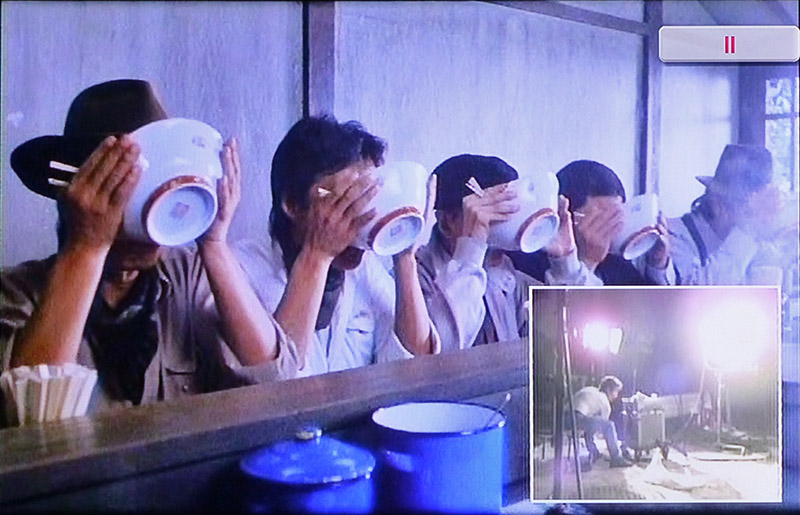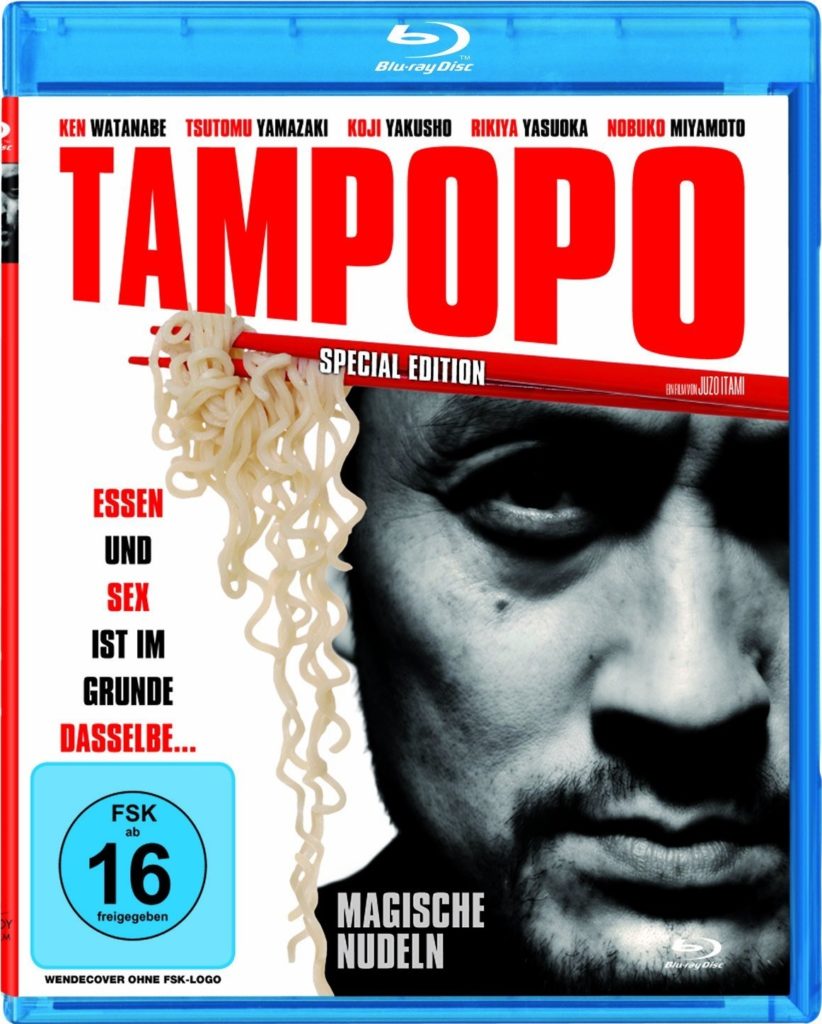
“Tampopo” Blu-ray on my TV – click for 1920×1080
Previously, I’ve compared an ancient “Tampopo” DVD release with one remastered six years later, and I can now compare those to the Blu-ray release eight years further on. The difference is eye-widening. The comparison here is not completely direct; the Blu-ray screens in this post are photos of my TV because I don’t yet have a BD drive in my PC. I colour-corrected those photos in Photoshop so they appeared identical to what I saw on my TV, then adjusted their perspective and size to 1920×1080. The older ones are unretouched frame stills done with Media Player Classic – Home Cinema. Clicking on any of these will show you the native resolution of the respective discs.

1998 Fox-Lorber DVD

2004 remastered DVD
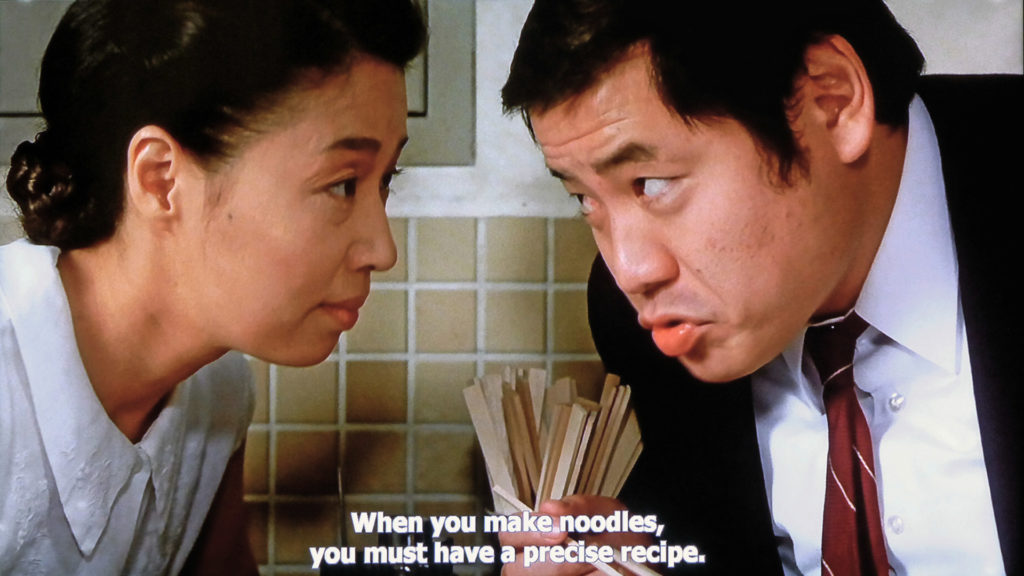
2012 Blu-ray release (Germany) – click for 1920×1080
Some Blu-ray transfers come across as a little strange, at least at first. For me, “Patton” is a prime example where the Blu-ray release makes the film almost seem like it was shot on video even though I know it was 65mm/Dimension 150. It’s a bit hard to describe, but the transfer seems too crisp, what you might expect if you applied a skosh too much sharpening filter to the entire film. I’ll admit that it’s amazing to see, say, the minute texture of fabrics, but it’s a little off-putting when you clearly see the fronting lace underneath George Scott’s false eyebrows – viz.:
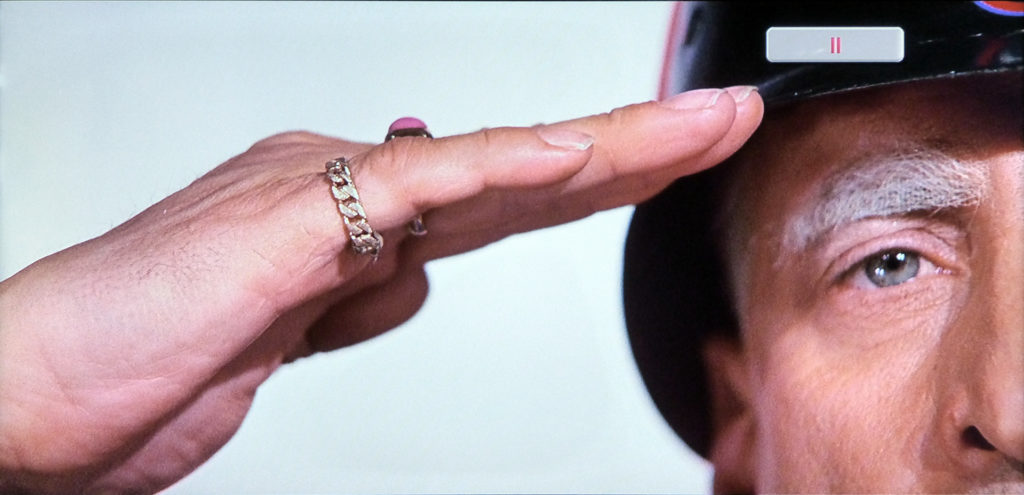
Click to see a larger size

“Ack!” said I
The problem with that particular shot from the opening is that the makeup was simply inadequate for such a close-up – “No, not ready at all, Mr. DeMille!” – but that video feel is there in much of the film. You do get used to it after a time.
I’m happy to report that the “Tampopo” Blu-ray is in the better category of transfer. Rather than turning shot-on-film into shot-on-video, the Blu-ray transfer of “Tampopo” turns it into the equivalent of being front and centre at a stage play. There’s a distinct feeling of being there which I find delightful.

1998 DVD

2004 DVD
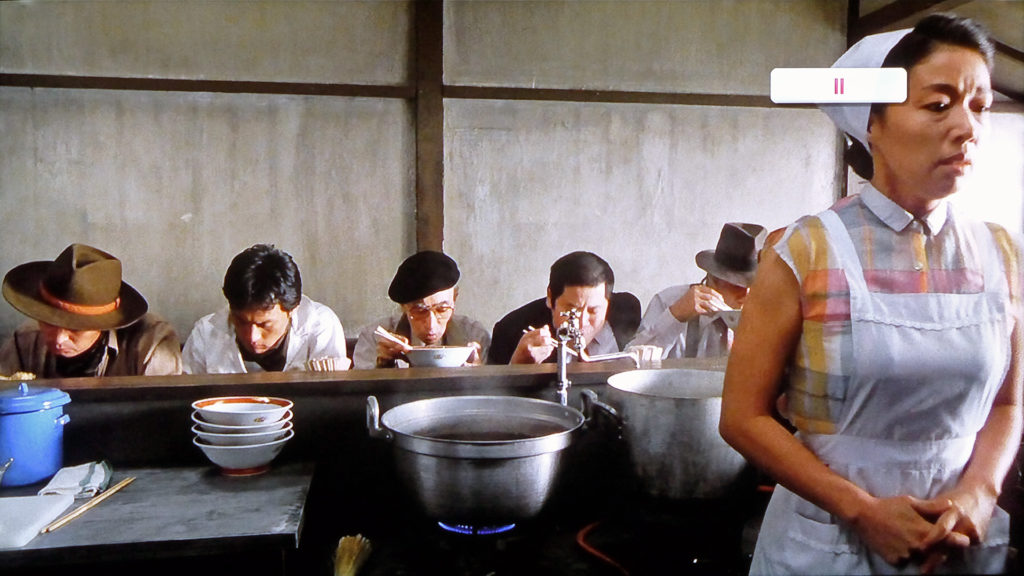
2012 Blu-ray
What I said on seeing this in the fourth minute of the film: “Heh heh.”

2012 Blu-ray – click for 1920×1080
